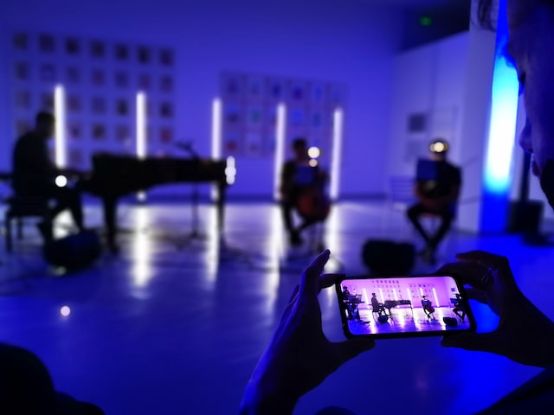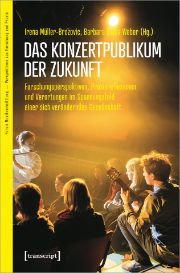Impulses and commonplaces
An anthology with twelve essays on new impulses for the concert business.

"Music education" is in vogue, but it's in quotation marks. Even at school, some children are introduced to classical music, hopefully even listen to Beatles, playfully rap or sing rhythmically. At classical concerts, there is an introductory lecture for adults, a program booklet and, in some cases, short presentations by the performers. In addition to music journalists, curators also act as "music mediators". The latter put together programs as sensibly as possible, perhaps looking for unusual concert formats, new venues, new forms of reception.
The concert audience of the future is the title of an anthology published by Bielefeld-based publisher Transcript, which mainly contains texts from a conference held at Bern University of the Arts in 2019. Essentially, the content revolves around the latter point: what can "exciting", new formats look like that do not follow the mainstream of traditional concert institutions? The starting point is clear for most of the authors. The "classical concert" already had "artificial hip joints" before corona, concedes co-editor Barbara Balba Weber, "Corona has given it the death blow" (p. 219).
Well, that's nothing more than a steep thesis, which sounds strange when thousands and thousands of musicians leave universities and academies every year. What's more, many people long for live performances, encounters and a sound quality that is nowhere near reproducible with headphones or even the most expensive surround home systems in the face of predominantly sad live streams. There are also places where concerts continue to work well, where halls are not only filled with people over the age of seventy. In short, the brash, broadcast-conscious tone of Weber and many other authors is unsettling.
Nevertheless, this anthology of twelve essays offers illuminating insights. Often inspired by new music, the 229 pages focus on participatory concerts, improvisation and, above all, new venues. Anja Wernicke reports on the Zeiträume festival in Basel, where outdoor concerts - in the tradition of rural concerts at the Rümlingen festival - have been relocated to urban spaces since 2015, creating links to architecture and certain social milieus. Catriona Fadke, Hannah Schmidt, Juri de Marco and Viola Schmitzer present their impromptu orchestra. In Berlin's sold-out Radialsystem, they played and improvised with elements from Beethoven's Fourth Symphony - obviously to the delight of the audience, who were able to move freely around the concert space.
Of course, buzzwords of current cultural policy should not be missing: Terms such as "digitality, sustainability, diversity, openness to process, participation" play their roles again and again in different colors. The sociologist and musicologist Susanne Keuchel writes of "many exciting didactic music concepts" that could be achieved if "apps are used to create participatory digital co-playing activities in addition to the sound of the orchestra" (p. 36). All of this may be well-intentioned, but it seems to be moving away from those (not just older!) people who simply want and are allowed to do one thing: To experience art in a concentrated way with other people. Without a lot of words, without questions about meaning and purpose, and ultimately without questions about a future that is difficult to assess per se.
Irene Müller-Brozovic, Barbara Balba Weber (eds.): Das Konzertpublikum der Zukunft - Forschungsperspektiven, Praxisreflexionen und Verortungen im Spannungsfeld einer sich verändernden Gesellschaft, 229 p., € 33.00, Transcript, Bielefeld 2022, ISBN 978-3-8376-5276-5
Open Access








